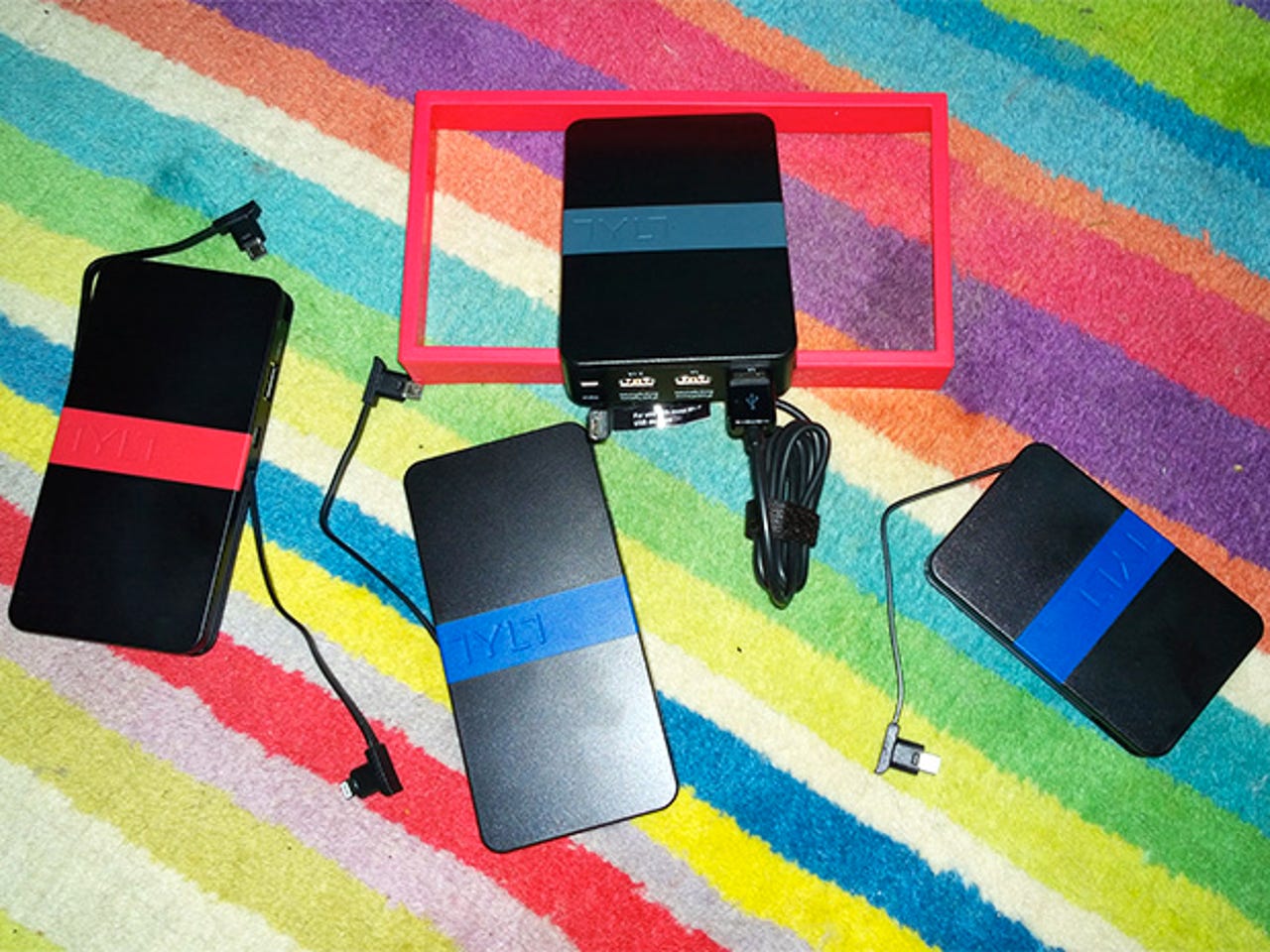TYLT: the Goldilocks of external batteries

There are dozens of companies making external batteries these days, in all shapes, sizes and styles. I've long been a fan of Innergie because it has access to laptop-grade batteries with better energy density than many competitors.
This means they're smaller for the same milliamp-hour rating, while their high-voltage ports mean your devices charge up quickly. However, they're also pricey, and while the sleek white styling matches Apple kit perfectly, that's not the design style everyone wants.
TYLT has its own look; sleek, black, angular, brightened with flashes of primary colour and extremely sturdy. And it has a full range of external batteries; you can pick an Energi in any capacity from 2,000mAh to 10,400mAh, and with a range of built-in cables and ports.
I've been trying out all of them for the last month. With this many options, some are too big and some are too small, but there should be one that's just right.

Energi 2K
The Energi 2K is small, neat and light. It's a thin, flat slab that's just 7/16 of an inch thick, and the shape means it's easy to carry in the same hand as your phone while you're recharging it. Like all the other Energi models, it has a button you press to check the charge (the five little LEDs light up to show how much power is left) and start the power flowing. And as usual, it charges over Micro-USB and dispenses power through a USB port, so your usual cable will work. At only 2,000mAh and 1 amp of power, the Energi 2K is enough to handle a phone, but I found it lacked the power to replace any of my favourites.
Energi 3K
The Energi 3K is a little bigger and heavier than the 2K, but it's still light and neat, and is considerably more useful. It has a built-in cable for charging your device that winds neatly around the side of the battery and slots into the recharging port. The cable fits snugly and has only the slightest bump to make it easy to pull it out when you need it. With 3,000mAh and a 2-amp output, this is enough to give your phone more than one charge or to top up a tablet. You still have to choose though: there are two Energi 3K models, one with a Micro-USB cable and one with a Lightning cable to fit iPhones. There's a USB port as well, so you can carry a cable and charge a second device.
Energi 5K
If you need more power, you're looking at something bigger and heavier. The Energi 5K is a little heavy and bulky, but it's still pretty portable. It comes with one or two integrated cables, so you can charge two or three devices at once. For some reason the cable ends on the 5K stick out much more than on the 3K and the cables are also shorter, which can be a little awkward. There are two options, both of which have three same 5,000mAh capacity and 3-amp power, so you can fast charge a phone or tablet — or two. One model has an attached Micro-USB cable and a USB port for a second cable, so you can charge two devices at once; the other has both Micro-USB and Lightning cables that wrap cleverly around the edges of the battery (as well as the USB port you can plug your own cable into, so you can charge a third device).
Charging a 5,000mAh battery takes a little longer and even with the 3-amp port it takes a while to charge your device; my 3,400mAh Lumia 1520 took a couple of hours to get a 100 percent charge from flat when I plugged it into the Energi 5K; 7-inch and 8-inch tablets took about the same time.
Energi 10K
The 10K is definitely a hefty device — it's the size and weight of an external hard drive, and not as neat or sleek a design as the other Energi batteries. You don't get any integrated cables, just three ports — two rated at 1 amp for charging phones and the third at 2.1 amps for tablets. None of these are fast-charging ports though; they combine to 4.2 amps so you can charge all your devices at the same time and they all get full power, but other batteries (like the Innergie Pocket Cell models) can combine their power output to drive a single port at 4 amps to fast-charge a tablet, which means you don't need to leave it plugged in for as long. Even charging a phone takes as long as with a smaller external battery: I plugged in a 2000mAh Lumia 1020 with 25 percent charge and it took two hours to get to full charge — although the Energi 10K still showed a 80 percent charge afterwards. The main advantage is the massive 10,400mAh battery, which means that you can fully charge an iPad or a few smaller devices.
Which Energi suits you depends on how much you want to charge and how much you want to carry. You can't just add up the capacity of the batteries in the devices you want to charge because there are inefficiencies in charging and transfer, so knock off ten or 20 percent before you do the sums.
Unless you're prepared to put up with the weight of the Energi 10K to get the capacity, all the TYLT batteries are pretty compact and lightweight for the power they deliver and the designs are both stylish and thoughtful. The integrated cables mean you won't end with a flat device, a battery, and no cable to connect the two.